Randal Plunkett I: The Green Sea
2023-03-28
by Niklas Göransson
Randal Plunkett is an Irish filmmaker and metalhead. We discuss his first full-length feature film, The Green Sea – a drama with an eerie and darkly supernatural edge.
– ‘You write what you know’ is an old saying I strongly believe in. I’d say quite a lot of the film’s main character, Simone, is built on me; perhaps ninety per cent. I’m not as good-looking as Katharine Isabelle, but I suppose one always gives oneself a little extra. Nor am I an alcoholic, child-beating writer – but at the same time, look at the underlying character traits and you’ll often find them in yourself.
The Green Sea is an Irish drama with a dark psychological twist. Like the film’s director, Randal Plunkett, the protagonist is a storyteller and a metalhead who is strongly drawn to nature and grew up in America but now lives in rural Ireland.
– It feels more authentic when your writing is somewhat rooted in truth. I suppose it’s a bit narcissistic in a way, but self-analysis is what allows us to explore our humanity. We’re only ever exposed to our own, whereas everyone else’s humanity will always be obscured by their own darkness.
Simone even communicates like an authentic Irish metalhead; the torrents of vicious banter she subjects her surroundings to sound ever so familiar. I’ve been to Dublin several times and that’s exactly what socialising with the local metal contingent is like: unceasing sarcastic trench warfare on all fronts.
– It’s what we do here – that kind of shit-talking sarcasm is a very common Irish thing. Look at some of the famous people from Ireland, like the Conor McGregors of this world. They’re all very much like that; pretty much the exact opposite of the Germans. We also wanted Simone to be sort of… not as attractive as Katie is. We tried to make her as unappealing and unsexy as possible, which I think we did a fairly good job with. I mean, she’s dressed in pyjamas for half the movie. As for the child, played by Hazel Doupe: I decided that we needed a cute actress so it would be even more uncomfortable when Simone is being abusive to her.
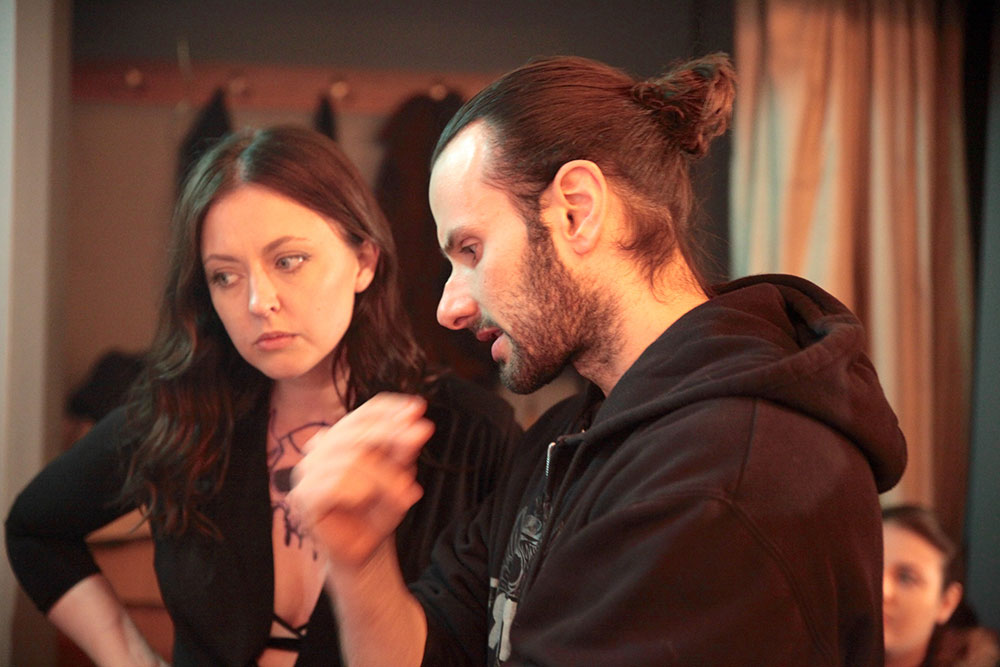
There is plenty of discomfort going around in The Green Sea, such as a soul-searingly awkward date night that begins inside a restaurant and climaxes in the parking lot. When directing something like that, I’m curious if one can reliably determine whether it effectively captures the cringe by watching the scene play out on the set.
– My job as director was made easy by the excellent casting. So, I’ll take more credit for that than I will for my directorial skills. I can say that the relationship between the actor and actress was pretty uncomfortable from the get-go, which I found to be hugely beneficial. The character of Justin the mechanic was written to be awkward, whereas Dermot Ward is more like ‘the boy next door’ – as opposed to the really awkward boy next door we were looking for.
Dermot Ward is an Irish actor known primarily for his part in the TV series Pure Mule. He also made a brief appearance in an episode of Game of Thrones.
– But when Dermot came in for the audition, he was just so authentic: a genuine Irish country boy. And I thought, ‘He won’t even have to act because someone like Katharine Isabelle will be very intimidating to a local actor who is used to making small films.’ I mean, she is a Hollywood actress who’s made movies with Christopher Nolan. And she’s very beautiful, especially in that scene. The awkwardness exists in the script to a large degree, but the actor himself perfected it.
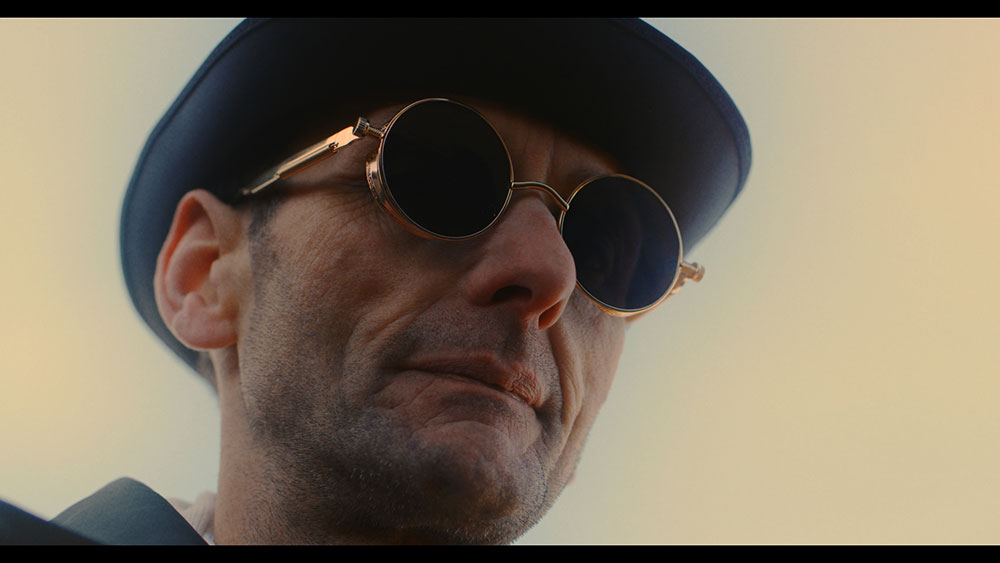
Another appropriate casting choice was Michael Parle, who plays a mysterious figure known as The Collector.
– Michael is an interesting character. He’s been floating around Ireland for a long time; he used to be a musician and has done a tonne of movies. He was in a big cult film – well, ‘big’ by underground standards – called Tin Can Man. That’s how I discovered him: I watched that movie and Michael plays this raving lunatic. He’s a very unusual-looking man who’s good at being uncomfortably creepy. His role in the film, The Collector, is essentially like Charon, the classic boatman of the River Styx.
Charon, the ferryman of Hades, is what’s known as a psychopomp: a mythological being tasked with escorting deceased humans to the afterlife. Hermes and Hecate are two other Ancient Greek examples – additional ones are Mercury from the Roman pantheon, Xolotl of the Aztecs, and Egypt’s Anubis. The most recognisable psychopomp in modern Western society is probably The Grim Reaper.
– The Collector looks menacing but, just like the boatman, he is harmless. And then he delivers this philosophical statement which enables us to piece together the film’s conceptual ideas. That part was a homage to the amazing Blade Runner climax – one of the greatest scenes in cinema – where Rutger Hauer’s character stands on top of the roof, holding a pigeon, and delivers his monologue. ‘All those moments will be lost in time, like tears in rain. Time to die.’ I wanted to create my own version, and this is where the beach scene comes in.
The beach scene shows a stunning dawn with the sun’s rays piercing the scattered clouds. Now, as stated, I’ve been to Ireland on a number of occasions and thereby concluded that blue skies are about as common as snakes. I can’t help but wonder how long they had to wait for that shot.
– Ireland in the winter actually sees a lot of sun – it just doesn’t appear much during the summer. You can’t tell from the film, but that beach was absolutely freezing; I’ve never been so cold in my life. The wind was so intense it left me with burns on my face. That scene was shot on our very first day – the two actresses met five minutes before they were crying on top of each other.
Surely, that can’t be optimal from an immersion standpoint?
– Indeed, quite literally the worst case of directorial planning ever. But we had no choice because that location is so far away from where I live, and we were having union issues. So, that scene where they hug… mere moments before, it was like, ‘This is Katie, this is Hazel. The two of you just underwent an epic journey together. Now, off you go – cry!’ I have no idea how they pulled it off, but that’s a testament to the two actresses.
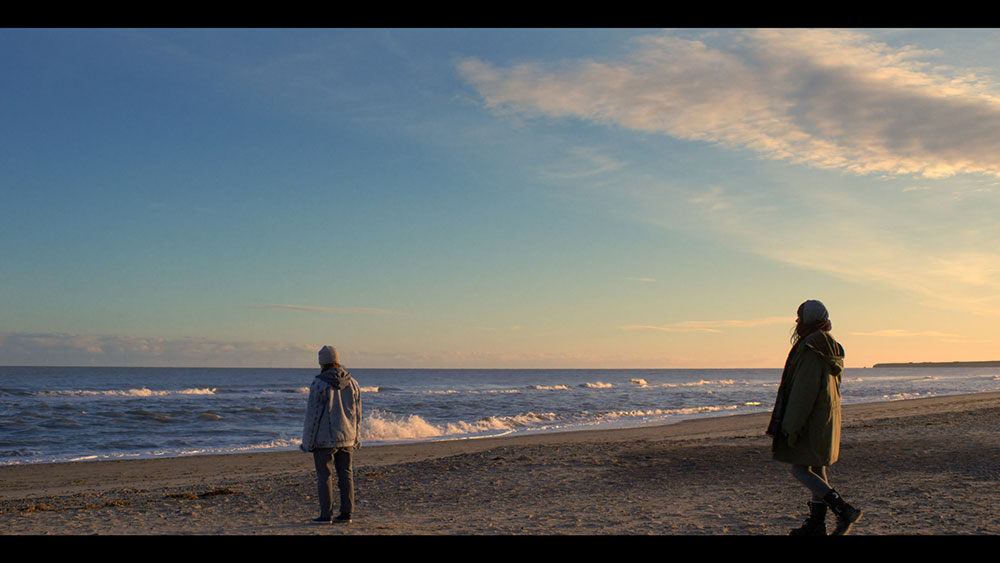
I’ve never given much thought to the amount of work that goes into setting the tone and ambience for a motion picture. Leading up to this conversation, I read a fair bit about these matters and learned the importance of colour palettes, angles, lighting, background music, and so on.
– When I construct a scene, I begin by writing the subtext. I then consider what I’m trying to say and where to bring it from. The next step is creating a visual concept. It’s very interesting how much one can express oneself through editing. Typically, when people watch a movie, they might see wide close-up shots of established spaces. I do things differently; I’m very camera-driven, and some of my camerawork can be erratic. During the casting process, I looked for two actresses with striking eyes – which both Katie and Hazel have – because of all these slow-beat scenes where they’re staring into the light.
Is this kind of thinking common among directors?
– I’m very obsessive about these things and heavily into art design; that’s one of my main interests. One aspect I’m especially intrigued by is lines and shapes. I portray the world Simone inhabits – particularly her house – like a frame within a frame. She’s always boxed in by things. I wanted to create straight lines contrasted by thorn-like lines. I envisioned something that’s perhaps a bit reminiscent of the German Expressionists. I wanted a film filled with shadows and darkness, essentially. You will notice that only her face is illuminated at certain points in the movie. These techniques are very typical for chiaroscuro, which is what people like Caravaggio did.
Chiaroscuro is one of four canonical painting modes of the Renaissance. Still to this day, it’s a popular approach to use in black and white photography. The primary focus of chiaroscuro lies in the interplay between light and darkness, which the artist uses to create atmosphere and drama.
– What came after chiaroscuro was even more radical: tenebrism, which could be seen almost like the death metal of art. Rather than working with shadows, you’re hitting straight blacks. The idea is to depict faces completely immersed in darkness. It’s very extreme, and I wanted to create something similar. I knew we wouldn’t have a lot of space on the set, so I had to maximise the film’s expressions. Had I shot the movie in a generic fashion, like the typical stuff you see on television, it would have a rather dull edge.
What did you do differently?
– We got up and close – all these shapes are mimicked throughout the house, even in the designs. I tried to always place people between things; there’s often a lot of open space, full of shapes and lines and distortions on each side. In most indoor shots, the characters are surrounded by spaces cluttered with objects. And as the story progresses, many of the images get closer and some of that obscuring lessens.
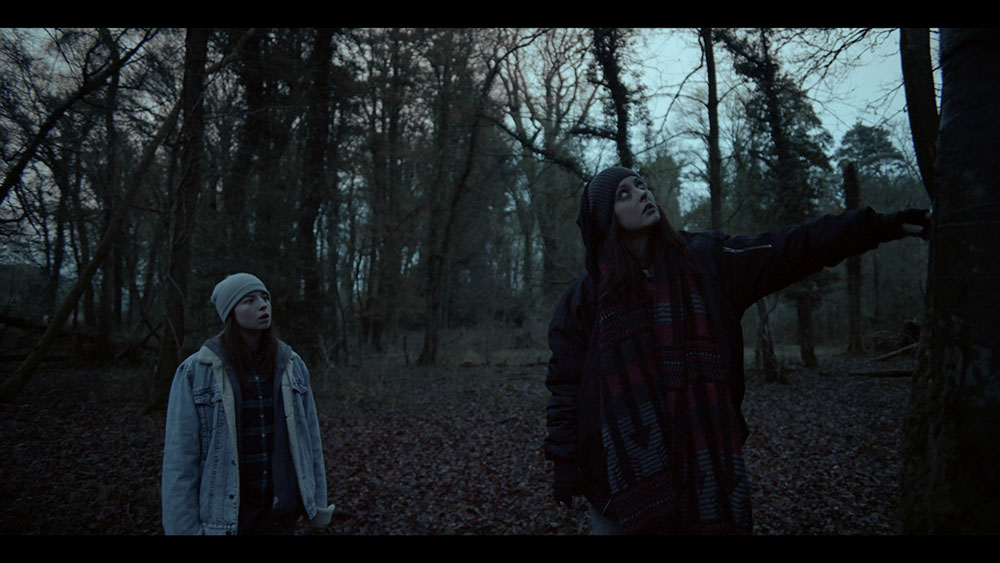
Little over a third into the film, there is a brief scene showing Simone sitting inside her house watching the child rake leaves in the garden. Despite the perceived tranquillity, there is something ominous and foreboding about it which gave me the impression that things were about to take a different turn.
– That’s an interesting and rather subtle scene. The image is unusual because it depicts a moment of tranquillity. It’s a beautiful part of the movie where they are beginning to get along; an emerging light warms the heart, so to speak. But there’s still this subdued sense of impending change – and change is one thing I’ve always believed we are all fearful of. It’s ingrained in the human spirit. We don’t like people challenging our belief systems. For true change to happen calmly, it must be very tranquil, which is what I had in mind for that scene. It’s the moment we sit on the knife’s edge, not quite accepting change but getting used to the start of a shift. And that ties into the raking of the leaves: she clears the old to allow new growth. Note also that Simone is very much obscured in darkness, staring at the child in a predatory manner.
Is this more tenebrism?
– It was more of a take on those old-fashion horror films from the fifties; I’m very influenced by Hammer Horror and things like that. It doesn’t really fit with the tone of what’s happening in the film, but it is very much about looking out from the dark into the light. That whole house was very much based in darkness. The green interior is juxtaposed with the outside, which was mostly brownish due to winter weather. The grass was almost burnt from the cold. So, it’s the complete opposite because you’ll notice how everything shot inside is very rigid: there’s a lot of jerking and everything is dark and obscured in shadows. But outdoors – even in the darkest woods – everything is big and glorious and light.
The house Simone lives in was painted black on the outside and green inside. This is relevant to note because when creating the tone for a movie, one first picks a few primary colours. Based on this selection, the effect is then enhanced by lighting and colour grading.
– It was a bit risky because the dark green absorbs light quite a bit, but it did give us this sort of natural field. Obviously, the film is called The Green Sea, but another big reason was my love for TYPE O NEGATIVE. Furthermore, the environment and metal have so much in common for me. I’m highly inspired by black metal, in particular: I love a lot of that stuff. I’ve also had a huge interest in some of the folk elements which are often incorporated. Done right, they promote this sense of the organic mixed with distorted darkness – similar to how I work with lighting. And that’s an approach I feel hasn’t been explored much in cinema. I’m using that flavour of aesthetics, the heavy contrast in black and white. Nothing new per se, but doing it out of an extreme metal influence might be. Music is a large portion of my life, and that’s where many of my ideas come from.
This is easily recognisable in both the soundtrack and band shirts worn by Simone, among which I spotted VOMITOR, MALTHUSIAN, VIRCOLAC, and SACRILEGIA.
– I tend to go for stuff I remember from my own life; the entire film is based on things that have happened to me, ordeals endured or events witnessed. And I’ve always injected every aspect of these experiences into my fictional characters. I’ve been everyone in The Green Sea. It’s not a perfect movie but it’s authentic. The characters are realistic and they’re all suffering. Sadness intrigues me, as does despair. I’ve never been interested in personalities who are amiable on the surface. Simone is deeply unlikeable, and this was a problem for me in terms of pushing the film. My original funders ended up not giving me any money because they found her too obnoxious. The other thing they didn’t like was all the bizarreness going on.
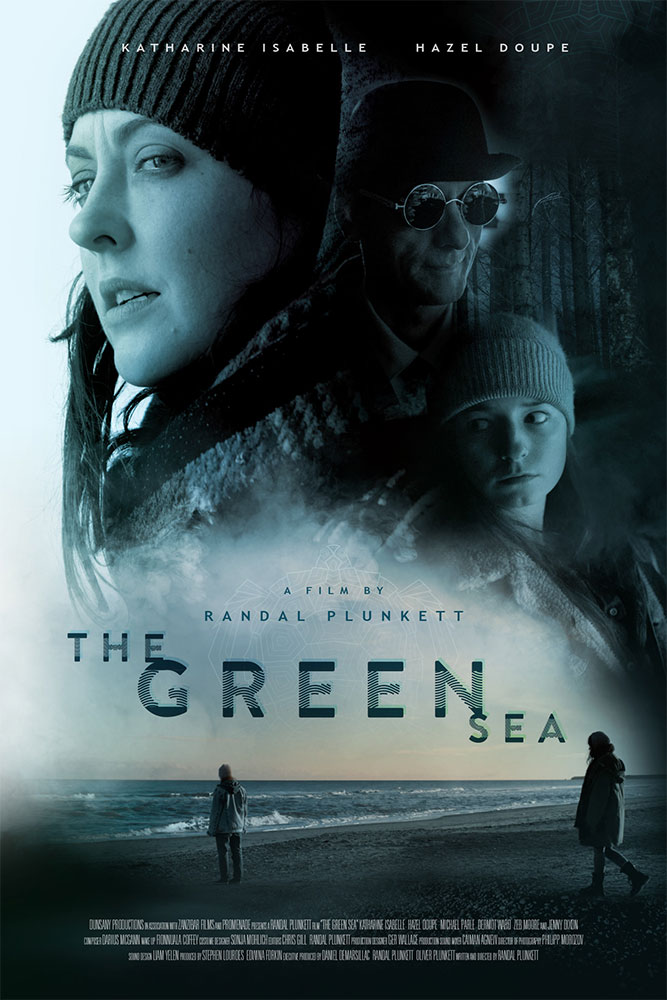
While researching this interview, it struck me how much of a filmmaker’s time and resources go into tasks unrelated to cinematography – funding being a primary example. Randal has previously stated that he might’ve been better off getting a business degree than studying film.
– No knowledge is ever wasted, but I should’ve gone for a business degree simply because you can’t make a movie unless you know how to bring in money. My dream was that if I did good enough work, I’d attract a producer to help me with the funding. But I’ve been at this for a while now and have yet to find anyone likely to get me any money, so I’ve had to do it all by myself. As such, it would’ve been great to know how to draft a business plan and find investors. That’s not something you pick up in film school; that set of skills is its own magic.
Rather than pursuing business acumen, Randal went to university and got an undergraduate degree in film.
– I learned to understand and critically read a movie, but nothing about actually making one. Don’t get me wrong though: those are valuable lessons for a director. Being able to look at a movie and understand the subtext is extremely important. You’re taught what works in a film – pacing, all that stuff – but you graduate… well, at least I did, with no practical ability to exercise the things you now understand. There was no ability to edit. I couldn’t light a scene. I knew what looked good and what didn’t but had not the faintest clue how to achieve it.
When Randal finished his studies in 2009, his prospects of making a living as a filmmaker looked grim. The Irish recession had been in full swing for some time, and there was very little work going around.
– To anyone who might not be aware: nobody will hire you fresh out of film school. It’s a ‘who you know’ business; you won’t get offered anything unless you’ve already worked with people that can vouch for you. There’s no, ‘Oh, I’ll apply for this position’ – it doesn’t happen that way. You do a job, then someone from that set says, ‘I know this guy…’. And eventually, you know enough people to get regular work.
Using the few contacts he had, Randal started taking on any film-related position he could find – sometimes without getting paid. Most of the practical knowledge he has today comes from hands-on work at different sets – about forty projects in total.
– I did the worst garbage you’ve ever seen in your life, like Indian movies without a story. I shot short films where I handled the camera or the sound. I worked on so many things; I made very little money but kept at it for years. I came to believe in one thing: to be a good manager, you must be aware of what everybody does. You don’t have to be a full-fledged professional to understand how difficult a certain job is or what it entails. The more you learn about sound and lighting, the better you’re able to direct it – and the more sensitive you are to determining whether things are done right. Being a director means knowing exactly what you want and not allowing them to… you know, some people just don’t care. I need to know what everyone does to appreciate their contributions properly, but also to estimate what might be a reasonable expectation.
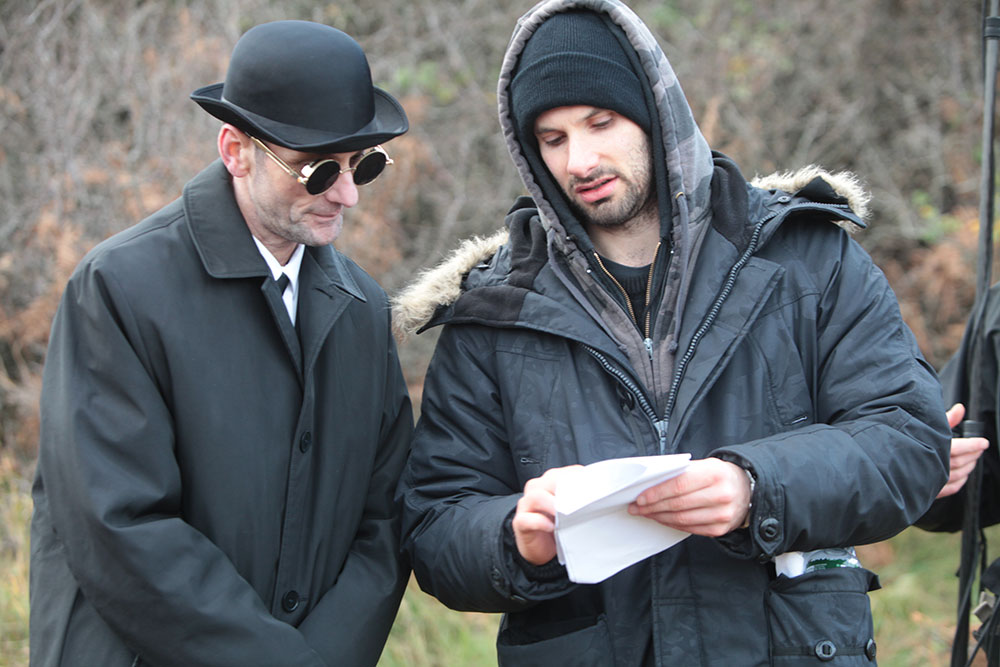
Randal had already concluded that he wanted to be a director at age five. Two decades later, in 2010, he founded Dunsany Productions and made his first attempt at directing a movie.
– I tried to find an editor to help me, but I couldn’t. So, I had an Apple laptop and figured I better start editing myself – otherwise, I’d never get a movie made. So, I began learning how to edit and soon realised that the sound had to be dubbed. There was no lighting on-site so we used a big generator, which resulted in an incessant loud ‘DRRRRR’ in the background. So, my early films are like a bad Italian movie from the 70s, with everyone talking a bit out of sync. But it was the best lesson ever because it taught me how to get things done with very limited resources. And off the back of that exercise, I now edit all my own work.
One year later, in 2011, everything changed for Randal. Shortly after he finished shooting a short film called Walt, his father – the 20th Lord Dunsany – passed away. His title and associated responsibilities were inherited by Randal, who now found himself the 21st of his line.
– I went to school with a lot of interesting people, like Prince William and Prince Harry of England. The grandchildren of Franco of Spain. I used to drink beer with Fidel Castro’s grandson. So, I’ve met many people with big shoes to fill, all of whom had hereditary duties. In my family, the firstborn son is always the one who takes over everything. The other children are there as support, but they have a bit more freedom – and let me parallel that to the British princes. There have always been responsibilities, and respecting the past is important. Now, you must understand that my family is almost like the last of the samurai; we’re the only remaining Normans in Ireland who still have everything. Well, not everything, but we have what we have.
Randal’s ancestors arrived at the British Isles with Duke William of Normandy to fight in the 1066 Battle of Hastings. After their role in the Norman Conquest of England, they eventually found themselves in Ireland and were seated at Dunsany Castle in 1432. The Plunkett dynasty has remained there ever since.
– I will look after Dunsany until I’m no longer able to. My job is to protect the estate, prepare something for my descendants, and make my own contribution. And when I perish, the next generation must do the same. We all want to follow our own intentions, but the truth of the matter is that we always think of the greater good. It’s funny because if you look at some of the great families in the world – the Rothschilds, for example – you’ll find that they have a similar ethos. They’re not royalty but basically just merchants who managed to buy their way into the ruling class. Once given the opportunity, they split up their children and sent them all over Europe to widen the family’s influence.
For the past two hundred years, the Rothschilds have been the most powerful and influential of all European banking dynasties. The foundations were laid in 1760 when Mayer Amschel Rothschild established a banking house in Frankfurt, Germany. By the 1820s, his sons had set up shop in London, Vienna, Paris, and Naples. By the turn of the century, the family had accumulated the largest private fortune in modern world history.
– It’s like that with us as well. We plan long-term into the future. I’m not considering the me of today; I’m thinking three generations down the line. The seeds I plant now – my contributions, if you like – will be enjoyed by them. Everything is planned, and it’s hard to live knowing that your decisions have already been made for you. I had to learn all the jobs and all our history: I need to know who did what. Because it’s not just about what I do, it is about passing on our legacy and remembering family history. Even if I don’t use the knowledge, it must remain. So, I am a historian, a storyteller, and a caretaker. I also have to be a soldier and protect my estate. And those are all things I learned from an early age.
How old were you when you realised what lay in store?
– About five. And that’s very heavy for a child to hear. Of course, I rejected it for many years. I was very unhappy. I wanted to have a life – something that was mine – and to be like everyone else. I wasn’t scared about finding work. I just didn’t want everything I do to be about the family. It’s a life of sacrifice. You’re trapped, essentially. You live around this wealth of not just money but also knowledge and history; it’s a beautiful prison with paintings in it, but a prison nonetheless.
Have you come to terms with it by now?
– Yes. It’s funny because time erodes, like water on stone. As the years passed, I began to feel… I’m no longer at odds with any of it. I fell into my position. My dad might have been anxious when he was dying that, perhaps, I’d be the first over the generations to reject it. But worrying is part of the job, I suppose. And I imagine that when it’s my time, I will also worry about what the next generation will do. But isn’t that just the way civilisations go?



